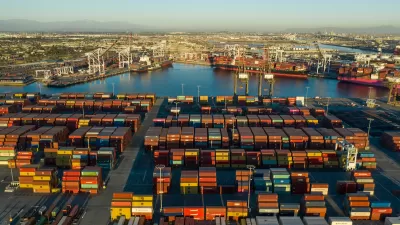Without their own dedicated federal funding, U.S. ports are often left to provide for themselves. More and more of them are turning to public-private partnerships.
"Unlike highways and the highway trust fund, ports do not have a dedicated source of federal funds. Historically, ports have relied on the revenues generated from operations, bonds supported by those revenues and a few government grants to keep their facilities up to date. Some state and local governments appropriate money from their budgets to support port improvements. Generally, however, ports are left to fund themselves."
"Recently, more and more ports have been turning to third-party investors to finance infrastructure modernization projects through public-private partnerships (PPPs). This change is due to both a lack of overall funding available given the demand for facility improvements and a growing number of private investors who see great potential for future returns on their investments in the nation's ports. As managing partner of the private infrastructure investment firm Highstar Capital, Christopher Lee puts it: 'Ports are going to be one of the first lines of the economy to turn when the environment improves. We want to be ahead of the competition.'"
FULL STORY: Port Privatization Trend Growing

Alabama: Trump Terminates Settlements for Black Communities Harmed By Raw Sewage
Trump deemed the landmark civil rights agreement “illegal DEI and environmental justice policy.”

Planetizen Federal Action Tracker
A weekly monitor of how Trump’s orders and actions are impacting planners and planning in America.

The 120 Year Old Tiny Home Villages That Sheltered San Francisco’s Earthquake Refugees
More than a century ago, San Francisco mobilized to house thousands of residents displaced by the 1906 earthquake. Could their strategy offer a model for the present?

Opinion: California’s SB 79 Would Improve Housing Affordability and Transit Access
A proposed bill would legalize transit-oriented development statewide.

Record Temperatures Prompt Push for Environmental Justice Bills
Nevada legislators are proposing laws that would mandate heat mitigation measures to protect residents from the impacts of extreme heat.

Downtown Pittsburgh Set to Gain 1,300 New Housing Units
Pittsburgh’s office buildings, many of which date back to the early 20th century, are prime candidates for conversion to housing.
Urban Design for Planners 1: Software Tools
This six-course series explores essential urban design concepts using open source software and equips planners with the tools they need to participate fully in the urban design process.
Planning for Universal Design
Learn the tools for implementing Universal Design in planning regulations.
Clanton & Associates, Inc.
Jessamine County Fiscal Court
Institute for Housing and Urban Development Studies (IHS)
City of Grandview
Harvard GSD Executive Education
Toledo-Lucas County Plan Commissions
Salt Lake City
NYU Wagner Graduate School of Public Service



























